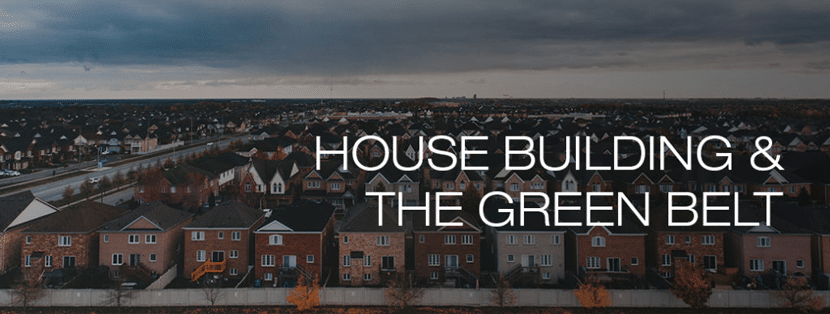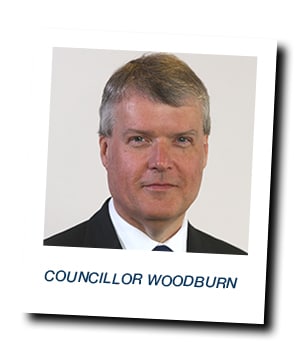House Building and the Greenbelt
Jan 16, 2018

A really interesting statistic was revealed at the end of 2017 by the Royal Statistical Society:
‘Only 0.1% of the UK land area is densely built upon.’ (Source: Royal Statistical Society, ‘Statistic of the Year’, December 2017, ).
You’d be forgiven for being surprised. In a recent study, Ipsos MORI discovered that the general public thinks that 47% of the land in the UK is densely built up.
While the density is fixed on metropolitan areas like London, Manchester and Birmingham, it still gives us a huge insight into the public’s impression of land use in the UK.
“People are way out in their estimate of how much of the country is densely built up, thinking around half the country is when actually on 0.1% is. This will partly reflect the way we live – the majority of people live and spend their time in built-up areas and this will make up most of their mental image of the country.” –Bobby Duffy, Managing Director, Ipsos MORI (Source: Ipsos.com).
Other interesting statistics included that only 5.4% of the UK is built upon.
While urban development forms such a small percentage of our landscape it remains a contentious topic. As Bobby Duffy references, most of our lives is spent in urban areas. Does this mean that green spaces, like the green belt, are even more important, because it’s those living in urban regions that need it most?
It’s a contentious topic, but an important one: should we build on the green belt?
In the Autumn Budget, the government set its sights on building 300,000 houses in the UK per year to keep up with the demand for new homes. While the target has increased, they’ve had enough difficulty trying to meet its previous target of 250,000 per year.
Many have been calling on the government to review green belt land around major cities to enable more development opportunities and make the task more manageable.
The Organisation for Economic Co-operation and Development (OECD) recommended that the government start building on green belt land to improve productivity, growth and living standards.
“Stringent planning regulation complicates new construction, and weak housing supply reduces affordability and the matching of skills to jobs, which in turn weakens productivity.” (Source: The OECD, The Telegraph)
The green belt was introduced to control urban growth in selected cities and towns by allocating surrounding countryside as protected areas. Roughly 13% of England is green belt land. The most prominent green belt in the South is found in London, but other areas include Bournemouth, Poole, Bristol, Bath, Gloucester and Cheltenham. It’s these areas that are in need of more affordable housing for workers.
But many members of the public are concerned about using our green spaces for housebuilding and how this will affect the environment, community and infrastructure.
It’s a balancing act between a general acknowledgment that we need to build more houses, but ensuring that we build them in the right places.
“The Government should initiate a national land use strategy that includes better protection and management of the Green Belts.” (Source: CPRE)
The government has said that they are committed to protecting our green spaces and will only build on them if communities desire it.
One of the government’s solutions to housing is to introduce more garden towns and villages. While some development projects are planned to take place using parts of green belt sites, these developments will have green space at their heart, offering good transport and high-quality homes as well.
“Done well with genuine local consent, garden villages and garden towns can be part of the solution and certainly preferable to what is currently happening in too many parts of the country.” – Shaun Spiers (Source: CPRE)
The government has revealed the first garden villages that plan to deliver 48,000 homes. This expands on the existing garden towns programme.
It’s a positive step forward to building more houses but addressing the public’s concern to retain green spaces.
“Locally-led garden towns and villages have enormous potential to deliver the homes that communities need.” – Gavin Barwell, Housing and Planning Minister (Source: GOV.UK)
The government announced that they plan to build fourteen new garden villages and three garden towns in England.
Areas in the south include:
- Oxfordshire Cotswold, Oxfordshire
- Longcross, Runnymede and Surrey Heath
- Welborne, Hampshire
- Culm, Devon
- Dunton Hills, Essex
- Aylesbury, Buckinghamshire
- Taunton, Somerset,
- Harlow & Gilston, Essex & Herfordshire
For a useful map of the locations, click here.
But, it’s not just existing green belt land that is a concern. It’s important that we have a strategy to think about areas in the UK that aren’t currently protected to ensure that there is a balance between our urban development and the environment.
“Many people naturally assume that every piece of open countryside or woodland must be designated as Green Belt. This is not actually the case. For example, in Hampshire, which is predominately green, there is actually no Green Belt except a very small area near New Milton. We have two national parks yet they are not Green Belt. We have strategic countryside gaps yet they too do not enjoy the protection of Green Belt status.
There is a proposal to create a Combined Authority in South Hampshire with all the councils working together on planning matters and one of the asks that I put in was to give us the ability to designate Green Belt. I believe that if people are being asked to accept ever more new homes then the deal should include the designation of areas which will remain protected and green.” – Councillor Seán Woodward
Councillor Seán Woodward is the Executive Leader of Fareham Council and the Conservative group leader. He is also the Fareham Borough Councillor for Sarisbury Ward, as well as the Hampshire County Councillor for Sarisbury Division.
It’s plans like this proposed idea in Hampshire that ensures that we preserve more green spaces, especially with plans for more housebuilding. If the government does adopt an approach for considered reviews of existing green belt land, there’ll need to be a balance so that consider other areas in the UK too.
We’re lucky in the UK that we have a rich landscape that we all want to protect. The reality is that we are an expanding population with new homes, infrastructure and other development projects inevitable for the future. Plans for garden towns and villages will work toward our need for more housing while satisfying our human need for green spaces. But it’s important that all projects in the future consider their environmental impact, which is why there needs to be an open dialogue between the public, government and developers. This will result in the best development that will benefit the communities and environment that we all live in. And, make sure that we can all see the green near our homes in the future.



